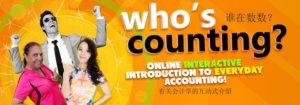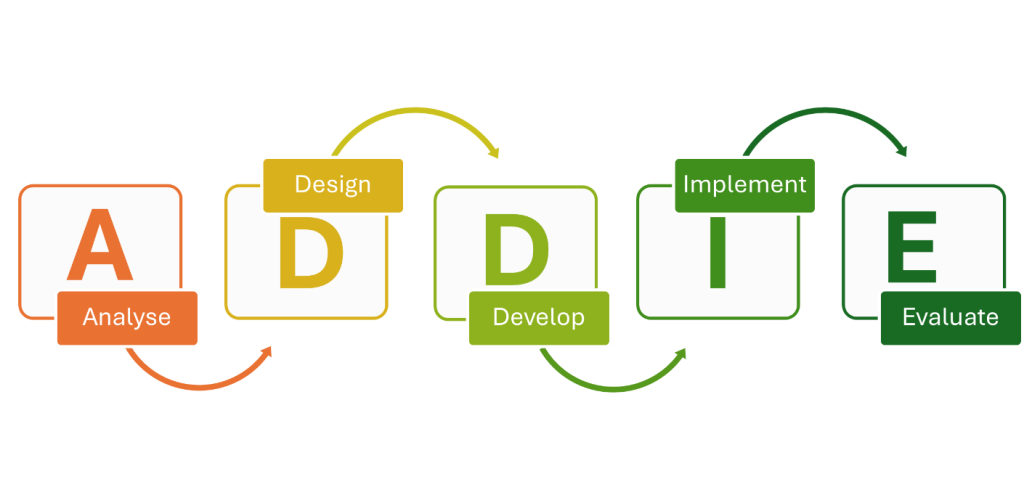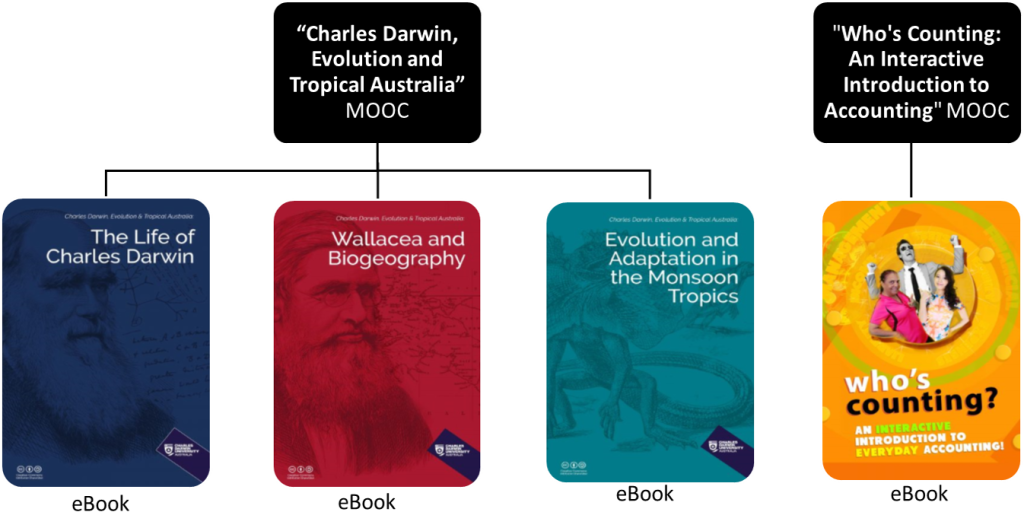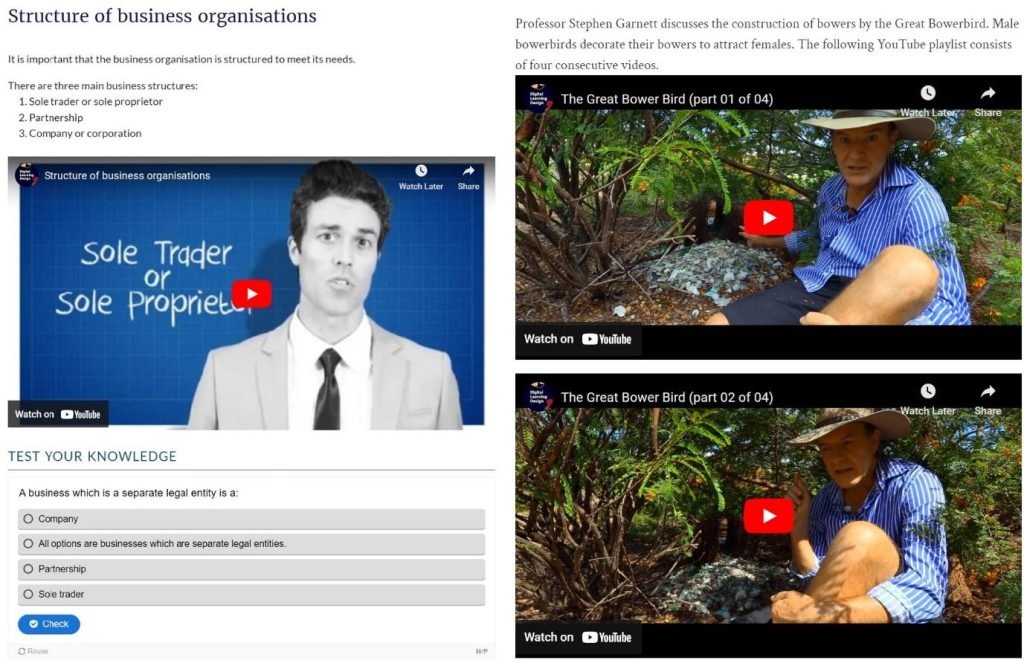Adaptation
Transforming OER: Repurposing MOOCs to Microlearning Using Pressbooks
Charles Darwin University
Alison Lockley
Overview
Open education and sharing of Open Education Resources (OER) continues to evolve and adapt to the changing educational technology landscape and learner expectations. This chapter explores a case study documenting the transformation of two Charles Darwin University (CDU) Massive Open Online Courses (MOOCs) into a series of open textbooks hosted on the Pressbooks publishing platform. These open textbooks offer easy access to the OER materials in a variety of microlearning formats. No longer constrained by course requirements, learners bypass the need to enrol or register to view learning materials, which can be accessed at any time, and can complete as much or as little as they need. The ebook format also offers flexibility and accessibility through a range of download formats, multimedia, and print options.
MOOCs and open textbooks share much in common, making the transformation a relatively straightforward process. Both formats are fully online, open to anyone, and potentially reach a large audience. MOOC materials are already attributed with Creative Commons licensing where appropriate, and the existing course structure was key in informing the design and format of the ebook. A point of difference, however, is MOOCs are designed with scaffolded activities and a form of recognition for completion, which is not the case for open textbooks. Open textbooks provide organised information around topics and act as a reference or just-in-time learning, rather than a course. While there are opportunities to complete formative activities in open textbooks, these are not tracked but still provide valuable review and reflection of learning. The ability to create a microlearning format in an open textbook, including interactives and multimedia, allows for bite-sized learning around specific topics that can be completed quickly in 5-15 minutes.
For CDU, OER ebooks provide an effective and efficient way to share valuable resources from MOOCs that are no longer being formally offered. This case study illustrates how these MOOCs have been reimagined to provide free microlearning opportunities and contribute to self-directed learning.
Using this case study
This chapter offers a way to preserve and share valuable resources from MOOCs that can be digested in a bite-sized format and support just-in-time learning.
Key stakeholders
The stakeholders directly involved with this project were a small team within the Education Strategy portfolio at CDU. There was strategic support from the Pro Vice-Chancellor, Education Strategy, and some liaison with subject matter experts who were involved in the original MOOCs, where possible.
The small project team consisted of three people:
- Project Lead/Learning Designer, Alison Lockley (case study author)
- Learning Designer, Karin Pfister
- Learning Resource Developer, Erin Lawson.
Background
CDU strives to be both a user and contributor of OER through approaches to education and sharing of information, with “openness” supported by strategic values and principles. CDU joined the early MOOC movement with three courses developed and offered to the public between 2013 and 2017. Like other MOOCs, they offered high-quality, accessible learning opportunities to a global audience (Lee et. al, 2023), and provided spaces to explore innovative approaches and emerging technologies without being constrained by accreditation requirements. With over 5000 students participating, the MOOCs also provided a powerful means to enhance outreach and visibility of CDU, and an opportunity for learners to get a taster for courses offered by the university.
In 2018, the external MOOC platform used by CDU was being decommissioned, prompting a need to rehouse the existing material. Much effort and resourcing had gone into the MOOCs, they had received great feedback and won a number of awards. Additionally, several CDU courses were leveraging parts of the MOOCs, and there had been requests to continue to access materials. This prompted an exploration of ways to continue to share the materials openly and cost-free to learners.
Several alternate MOOC platforms were initially explored, as was a pilot project to distribute the MOOCs via Raspberry Pi for remote learners. Around the same time, CDU was investigating ebook platforms as part of their OER strategy, and soon became the first university in Australia to sign an enterprise agreement with the digital publishing platform Pressbooks. Looking closer at learner requirements, and considering the overall value proposition for the university, Pressbooks emerged as the most suitable option for the adaption of two of CDU’s MOOCs.
About the two MOOCs
“Charles Darwin, Evolution and Tropical Australia” was CDU’s first MOOC. Initially developed in 2013 and hosted by the great-great-grandson of Charles Darwin, Chris Darwin, this MOOC capitalised on the research and expertise from the School of the Environment at CDU. This MOOC introduces Charles Darwin, the theory of evolution, the esteemed naturalist Alfred Russel Wallace, biogeography, and an overview of adaptation of tropical organisms in the Northern Territory of Australia. The MOOC ran several times until 2016, notably supported by guest appearances from biannually appointed Charles Darwin Scholars: Harvard University’s Professor Janet Browne, in 2014; and Professors Peter and Rosemary Grant from Princeton University in 2016.

“Who’s Counting: An Interactive Introduction to Accounting” was developed by CDU and its Chinese partner university, Anhui Normal University. Offered partially in Mandarin Chinese and fully in English, the course was directed at students with little or no knowledge of accounting and incorporated a wide variety of engaging and interactive resources, including practical activities to introduce everyday accounting concepts. The MOOC used actors to embody different accounting roles, and presented an engaging storytelling approach with practical activities.

Value proposition
Adapting MOOCs into open texts with Pressbooks offered a range of benefits to CDU including:
- Easy access for learners: Open textbooks can be accessed and shared via a public link, without the requirement for a login or being restricted by course duration windows.
- Learner preferences: Adults tend to prefer shorter, more informal educational activities rather than traditional, longer format courses (Bannister et al., 2020) as seen in the popularity of social media for curating and sharing information. A microlearning format for MOOC resources, housed in Pressbooks, addresses these preferences while still openly sharing the valuable MOOC resources
- Just-in-time learning: Open texts support the many learners who only aim to build a certain knowledge base or upskill (Wang 2023) and are not motivated to complete an entire course. Microlearning can present significant benefits for learners in terms of improving engagement and attainment (Shatte & Teague, 2020) and for contributing to lifelong learning (Olivier, 2021).
- Enhanced flexibility: Open texts in Pressbooks can contain a range of interactives and embedded multimedia, and can be downloaded in a range of digital formats for viewing at any time. Each page has a unique URL making it easy to reference or link for existing CDU users.
- Sustainable educational resources: Open texts provide long-lasting digital resources that can be easily updated with new content. They can be used and shared with minimal support demands while reducing the need for physical printing.
- Wider reach: The audience for the adapted MOOC resources can extend beyond course participants to a wider global audience.
- Cost effective: CDU can leverage the Pressbooks system for creating the open texts as part of their annual subscription, without the need for additional hosting costs or support resources.
Project description
The project to adapt the two MOOCs had a relatively short timeframe of 3 months, set by the imminent decommissioning of the current hosting platform. The project used a multi-stage approach based on the commonly used ADDIE instructional design model (ISFET, 2024), with stages visualised in Figure 3 and detailed in Table 1.

|
Stage |
Key tasks |
|
1. Analyse |
Review MOOC material for relevance, currency, and suitability, and curate resources Identify objectives for MOOC content adaption Consider audience needs and patterns of access from analytics and feedback Confirm content inventory including text, interactives, images, and videos Map topics, and how these could be logically grouped for ebooks Identify materials suitable to be adapted to ebook formats |
|
2. Design |
Select topics to be covered in each ebook. Topics were then distilled into focused sub-topics that could be easily digested in short periods, and independently accessed and completed Design each ebook structure, including chapters and sections Decide on content to be included and if changes need to be made to format to contextualise for ebook Plan the visual elements of each ebook Create ebook shells with basic structure |
|
3. Develop |
Copy content into ebooks and add/customise content as needed Adapt interactives and self-marking activities e.g. Articulate Storyline activities rebuilt in H5P Integrate visual elements, such as image, videos and theming Ensure media is optimised for ebook delivery and includes alternative text and attributions for multimedia Review and gather feedback from a sample of stakeholders (e.g. library, subject matter experts from MOOCs, learners) and make final amendments |
|
4. Implement |
Enable download options Test on devices to make sure the ebooks display and function properly Release as public link that is discoverable on CDU ebook and library catalogues Share information about the release of the ebooks to the CDU lecturers utilising materials in courses |
|
5. Evaluate |
Gather feedback and analytics on ebook use Schedule the ebooks for regular review |
Key outcomes
The project resulted in the development of four ebooks from the two MOOCs (Figure 4), all openly licensed with the Creative Commons license CC BY SA.

Three ebooks were developed from the “Charles Darwin, Evolution and Tropical Australia” MOOC, drawing content from all four modules of the course. The final resulting titles included:
- The Life of Charles Darwin
- Wallacea and Biogeography
- Evolution and Adaptation in the Monsoon Tropics
The most popular of these ebooks at the time of writing is “Evolution and Adaptation in the Monsoon Tropics”, which includes much of the video content created with CDU lecturers, and has been used by several of the Environment Science courses at CDU.
One ebook was created from the “Who’s Counting: An Interactive Introduction to Accounting” MOOC, drawing content from only the first module of the course. The decision to just create one ebook was based on the popularity and majority use of the first module, and the ownership of content to be freely shared as OER by CDU in an open textbook.
All four ebooks contain microlearning activities, including multimedia and interactive quiz content (Figure 5).

The ebooks continue to be accessed by learners both within CDU and around the world, and undergo regular review for usage analytics and link integrity (annually). The intended future direction is to look at possible improvements for content, layout updates and new activities.
Project champion reflections
“It was important to keep the learner experience in mind when taking something so large and re-imagining it as bite-sized chunks of learning. It was necessary to re-evaluate wording and context as it was no longer this long journey you were taking the learners on, but rather a brief experience that would engage them but also “close the loop” so to speak on some type of measurable learning outcome. The re-creating of interactives using H5P (originally created in Storyline) was an integral part of the process and such a great way to revisit what had been done originally and evaluate the usefulness or necessity of each component.”
— Karin Pfister, Learning Designer
“I remember the transfer process being fairly straightforward, given that most of the video content was already hosted on YouTube. However, I do remember the images being a pain to download and re-upload individually, because when we initially just copy-pasted over, they were linking back to where they were originally hosted on the Blackboard Open Education site. And then adding all the details for media attributions…! Obviously, Pressbooks is not designed to have all the same functionality as an LMS, so we also had to remove any of the activities that relied on discussion boards or actual facilitation/moderation by lecturers.”
— Erin Lawson, Learning Resource Developer
In practice
Learnings and recommendations:
- Open textbooks: Pressbooks is a highly recommended way to preserve and share valuable resources from MOOCs that are no longer being offered. Ebooks can be digested in a bite-sized format and better support just-in-time learning.
- Structure: Consider how the MOOC materials will be scaffolded in the ebook publishing platform, and take time to plan the structure before starting to build. Maybe the content is distributed across several ebooks, not just one. Consider audience needs carefully, including accessibility, and ensure that there is a logical flow and presentation of materials.
- Multimedia and learning activities: Interactivity in the digital environment is a key part of online learning. You may need to adapt or redesign original MOOC content to ensure there is multimedia and activities to support deeper learning. H5P enables the creation of interactive content within Pressbooks, allowing for the incorporation of quizzes, interactive timelines, and other engaging elements.
- Discoverability: Think about how your audience will find and access the ebooks. Work with your library to ensure they are discoverable and included in applicable catalogues. You can also increase reach through public search engine indexing, sharing on open educational resource platforms, and promoting via accessible online channels.
- Project resourcing: Allocate a realistic, flexible project timeline and draw on the strengths of a co-design team. You should also assess funding requirements and budget breakdowns before you start, to ensure the project is viable.
- Licensing: Carefully consider the licensing and intellectual property rights associated with the MOOC content and ensure all the materials to be adapted are suitable to be offered as OER, and that correct attribution is applied.
Further resources
Access the ebooks here:
- The Life of Charles Darwin
- Wallacea and Biogeography
- Evolution and Adaptation in the Monsoon Tropics
- Who’s Counting? An Introduction to Accounting
References
Bannister, J., Neve, M., & Kolanko, C. (2020). Increased educational reach through a microlearning approach: Can higher participation translate to improved outcomes? Journal of European CME, 9(1), 1834761-1834761. https://doi.org/10.1080/21614083.2020.1834761
International Society for Educational Technology. (2024). ADDIE model. ISFET. https://www.isfet.org/pages/addie-model
Lee, J., Song, H.-D., & Kim, Y. (2023). Quality factors that influence the continuance intention to use MOOCs: An expectation-confirmation perspective. European Journal of Psychology Open, 82(3), 109–119. https://doi.org/10.1024/2673-8627/a000047
Olivier, J. (2021). Creating microlearning objects within self-directed multimodal learning contexts. In J. R. Corbeil, B. H. Khan, & M. E. Corbeil (Eds), Microlearning in the digital age. https://doi.org/10.4324/9780367821623
Shatte, A., & Teague, S. (2020). Microlearning for improved student outcomes in higher education: A scoping review. https://osf.io/preprints/fhu8n/
Wang, W., Zhao, Y., Wu, Y. J., & Goh, M. (2023). Factors of dropout from MOOCs: A bibliometric review. Library Hi Tech, 41(2), 432–453. https://doi.org/10.1108/lht-06-2022-0306
Acknowledgement of peer reviewers
The authors gratefully acknowledge the following people who kindly lent their time and expertise to provide peer review of this chapter:
- Nicole Gammie, Senior Learning Librarian, La Trobe University
How to cite and attribute this chapter
How to cite this chapter (referencing)
Lockley, A. (2024). Transforming OER: Repurposing MOOCs to microlearning using Pressbooks. In Open Education Down UndOER: Australasian Case Studies. Council of Australian University Librarians. https://oercollective.caul.edu.au/openedaustralasia/chapter/transforming-oer
How to attribute this chapter (reusing or adapting)
If you plan on reproducing (copying) this chapter without changes, please use the following attribution statement:
Transforming OER: Repurposing MOOCs to microlearning using Pressbooks by Alison Lockley is licensed under a Creative Commons Attribution 4.0 International licence.
If you plan on adapting this chapter, please use the following attribution statement: *Title of your adaptation* is adapted from Transforming OER: Repurposing MOOCs to microlearning using Pressbooks by Alison Lockley, used under a Creative Commons Attribution 4.0 International licence.
Open Educational Resources (OER) are learning, teaching and research materials in any format and medium that reside in the public domain or are under copyright that have been released under an open license, that permit no-cost access, re-use, re-purpose, adaptation and redistribution by others.
A learning approach that delivers educational content in small, focused, and easily digestible units, typically lasting a few minutes. Often used in corporate training, language learning, and skill development where learners benefit from short, targeted instruction.


